We do not know where the Khashoggi case will go but what is happening in Saudi Arabia is important for the world.
Jodi data up to Aug 2018, released 19/10/2018 http://www.jodidb.org
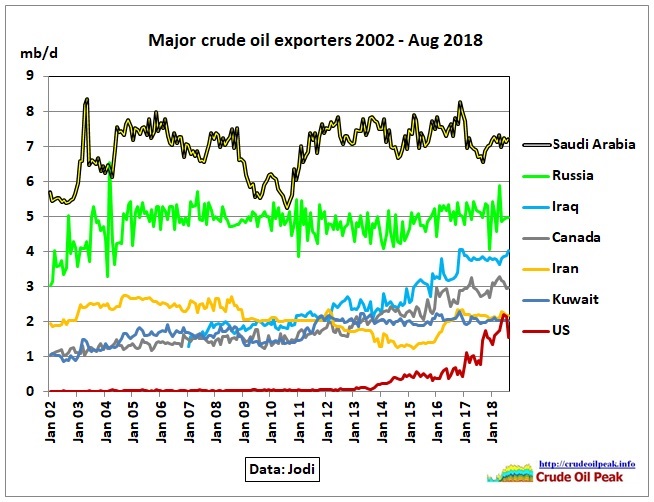 Fig 1: Saudi Arabia is crude exporter #1
Fig 1: Saudi Arabia is crude exporter #1
Note that these are gross exports. The US (which is a net importer of crude) is shown for comparison.
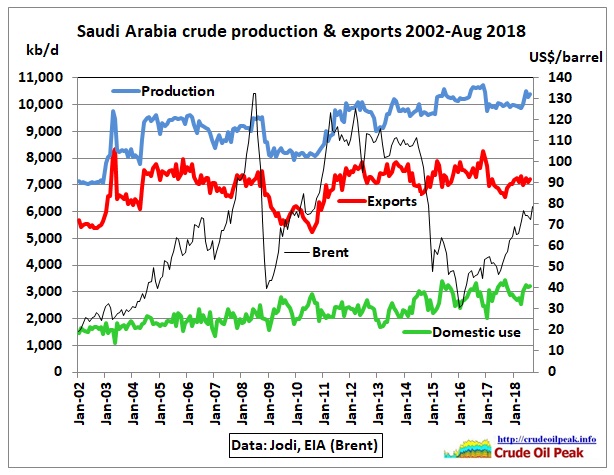 Fig 2: Saudi crude production and exports
Fig 2: Saudi crude production and exports
Crude oil exports (red line) have been on a bumpy plateau between 7-8 mb/d since 2011, but in 2018 were actually lower than in 2005 when global crude production first peaked. Increases in production (black line) were modest (compared to Saudi’s claimed reserves of 266 Gb) and mainly used domestically:
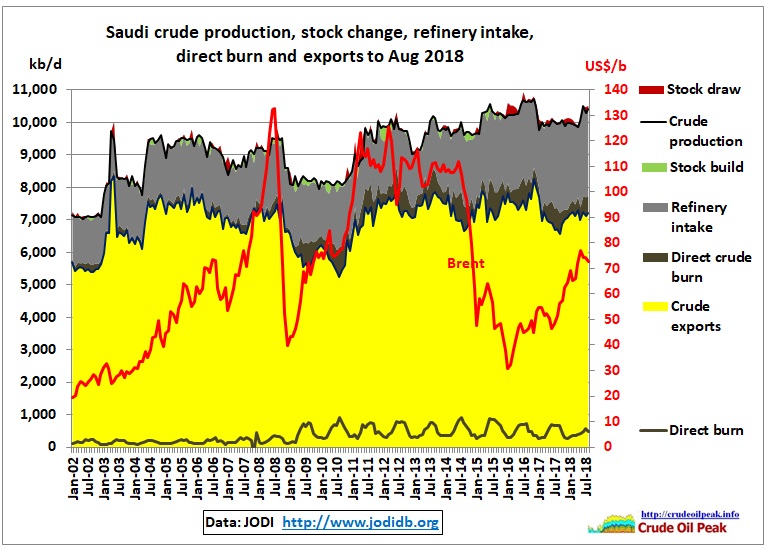 Fig 3: Use of Saudi crude production (stacked)
Fig 3: Use of Saudi crude production (stacked)
The light green area is stock build, the dark red area stock draw (sitting on top of the production curve) and used as refiner intake. See Fig 8 for more details.
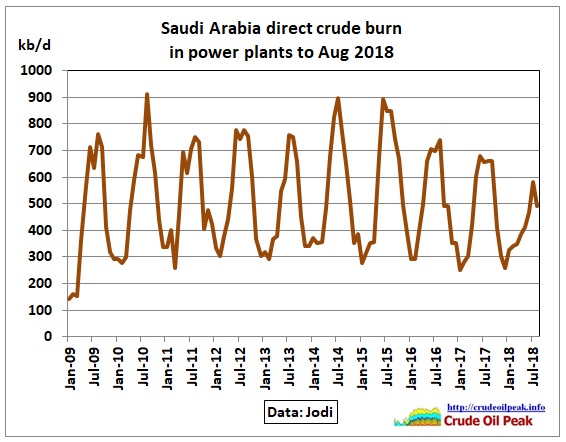 Fig 4: Saudi direct crude burn in power plants
Fig 4: Saudi direct crude burn in power plants
This is highly seasonal between 300 kb/d in winter and 600 kb/d in summer.
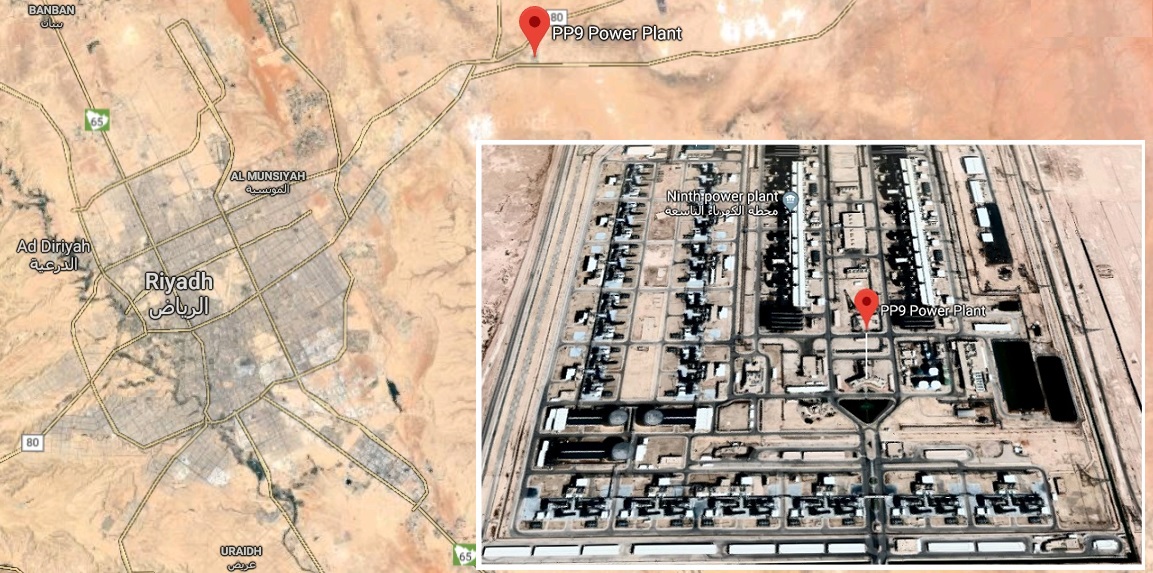 Fig 5: Location of Riyadh’s power plant PP9
Fig 5: Location of Riyadh’s power plant PP9
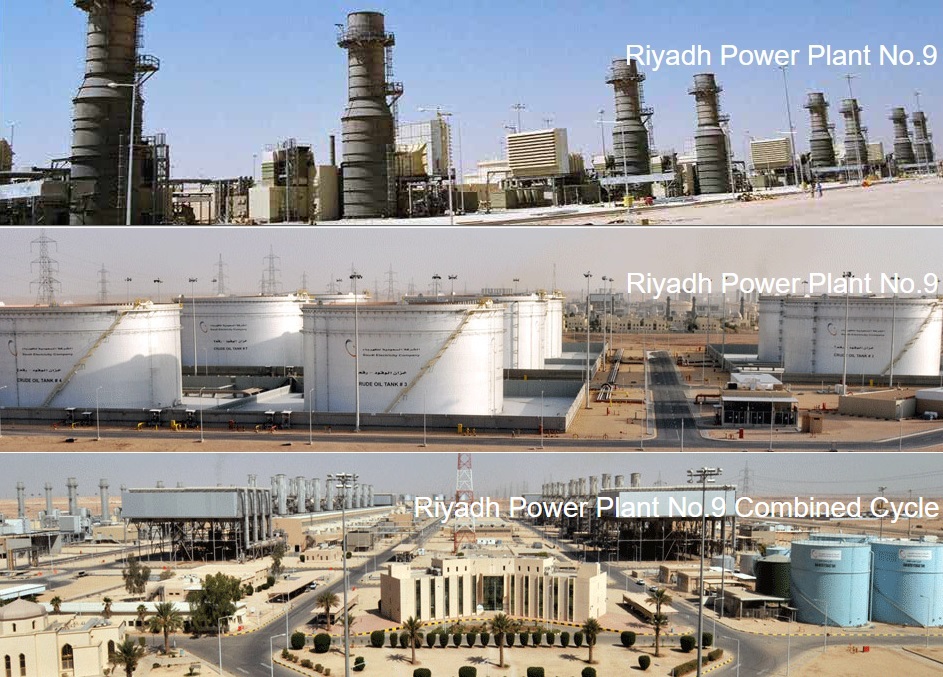 Fig 6: Riyadh’s crude oil power plant PP9
Fig 6: Riyadh’s crude oil power plant PP9
PP9 is the largest crude oil plant in the world (5,980 MW). In 2016, Saudi Arabia had a total 66 GW installed, generating 330 billion KWh.
In order to free crude oil for use in refineries and chemical complexes, peak crude burn has been reduced (see Fig 4) as more gas is used:
 Fig 7: Fuels used for power generation
Fig 7: Fuels used for power generation
http://npolicy.org/Articles/March%202018%20Drafts/Mills_Saudi_Arabia_Feb18.pdf
Crude inventories
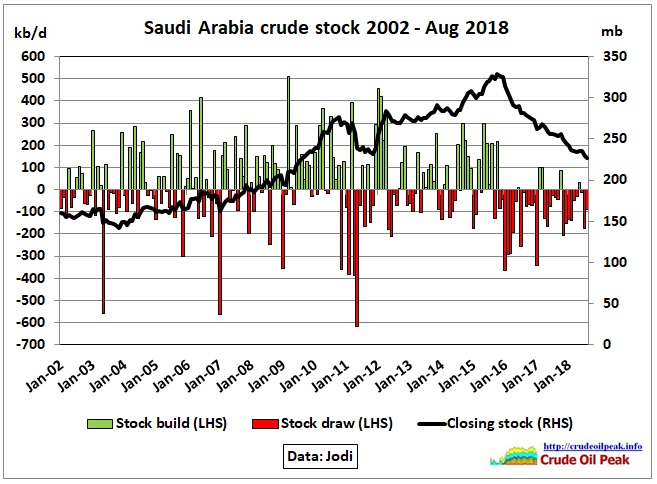 Fig 8: Saudi monthly crude oil stock changes
Fig 8: Saudi monthly crude oil stock changes
Saudi closing crude stock peaked in October 2015. Since then, around 100 mb have been drawn, on average 100 kb/d or 4% of refinery intake. For a couple of months, this was around 300 kb/d
Oil products
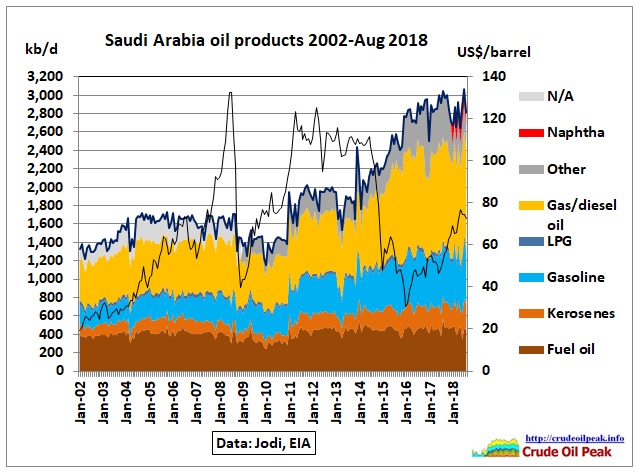 Fig 9: Saudi refinery output
Fig 9: Saudi refinery output
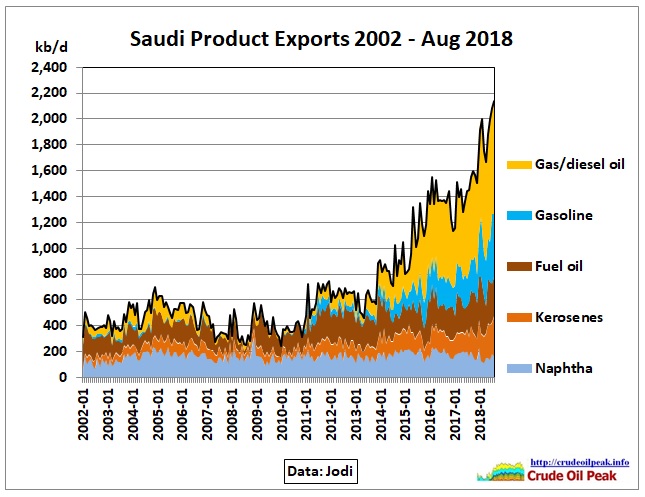 Fig 10: Saudi product exports
Fig 10: Saudi product exports
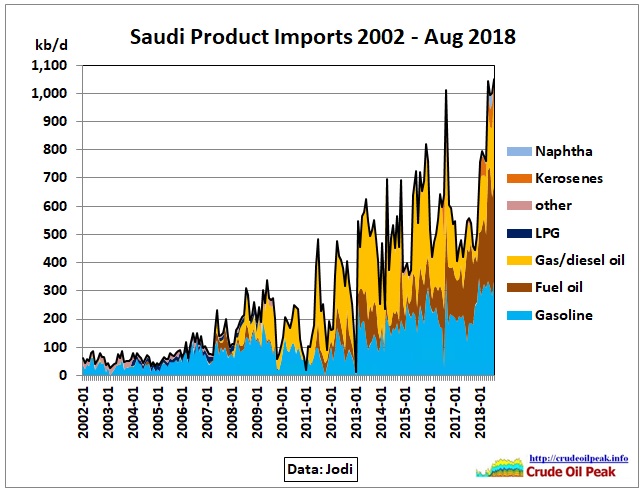 Fig 11: Saudi product imports
Fig 11: Saudi product imports
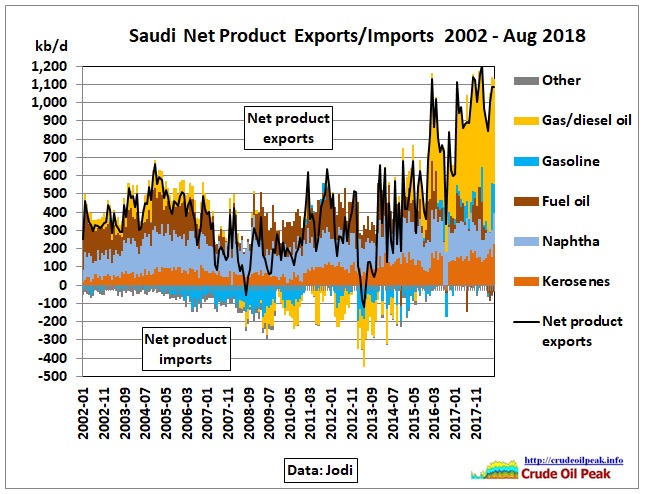 Fig 12: Saudi net product exports/imports
Fig 12: Saudi net product exports/imports
In the last years, Saudi Arabia has virtually eliminated net product imports which of course had to be heavily subsidised.
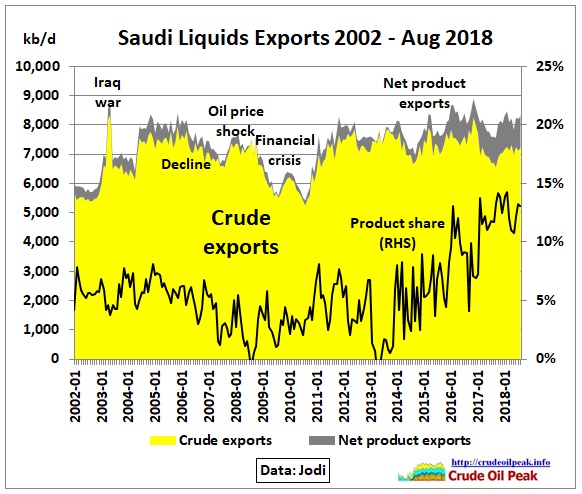 Fig 13: Saudi net liquids exports
Fig 13: Saudi net liquids exports
The crude exports decline between 2005 and mid 2007 caused oil prices to go up and the US recession end 2007. In 2017/18 net liquids exports were just 160 kb/d higher than in 2005 while crude exports had actually fallen by around 400 kb/d.
Natural Gas liquids
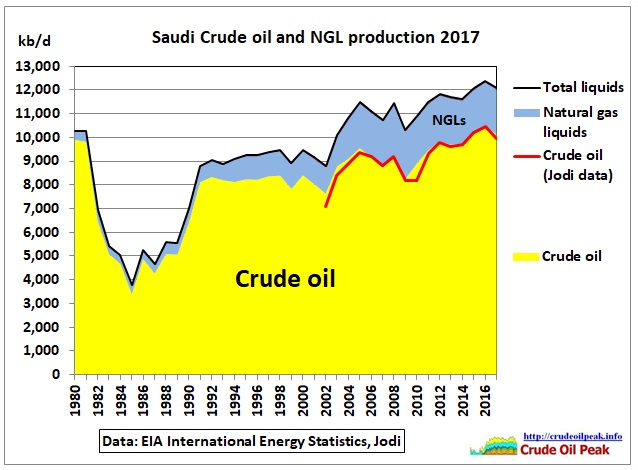 Fig 14: Saudi total liquids production
Fig 14: Saudi total liquids production
BP Statistical Review data
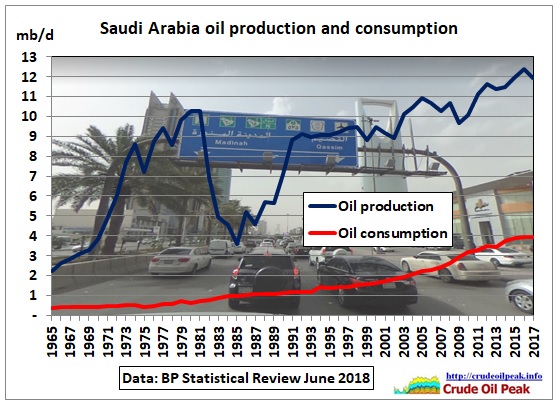 Fig 15: Saudi oil production vs consumption
Fig 15: Saudi oil production vs consumption
Note that oil in the above graph includes NGLs (Fig 14)
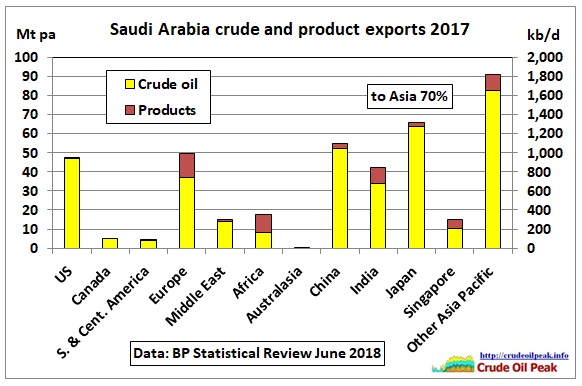 Fig 16: Saudi oil exports by destination
Fig 16: Saudi oil exports by destination
Conclusion
Saudi Arabia’s net liquids exports are not growing commensurate with oil demand in Asia, the destination of 70% of Saudi oil. If something were to happen in this country impacting on oil production and/or oil exports, this would worsen the situation and hit Asia’s and therefore the world’s economy.





